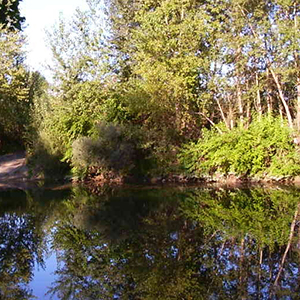Survival and swimming performance of a small-sized Cypriniformes (Telestes muticellus) tagged with passive integrated transponders

Submitted: 24 February 2023
Accepted: 11 March 2023
Published: 21 March 2023
Accepted: 11 March 2023
Abstract Views: 2313
PDF: 503
HTML: 42
HTML: 42
Publisher's note
All claims expressed in this article are solely those of the authors and do not necessarily represent those of their affiliated organizations, or those of the publisher, the editors and the reviewers. Any product that may be evaluated in this article or claim that may be made by its manufacturer is not guaranteed or endorsed by the publisher.
All claims expressed in this article are solely those of the authors and do not necessarily represent those of their affiliated organizations, or those of the publisher, the editors and the reviewers. Any product that may be evaluated in this article or claim that may be made by its manufacturer is not guaranteed or endorsed by the publisher.
Similar Articles
- Ximena Sánchez Medina, Miroslav Macek, Fernando Bautista-Reyes, Andrea Perz, Patricia Bonilla Lemus, Mario Chávez Arteaga, Inter-annual ciliate distribution variation within the late stratification oxycline in a monomictic lake, Lake Alchichica (Mexico) , Journal of Limnology: Vol. 75 No. s1 (2016): Proceedings of the 6th National Congress of Limnology
- Mindaugas Zilius, Rutger de Wit, Marco Bartoli, Response of sedimentary processes to cyanobacteria loading , Journal of Limnology: Vol. 75 No. 2 (2016)
- Martha B. Rendón-López, M. Luisa Suarez Alonso, Gloria L. Ayala-Ramirez, Yazmin Hernández-Linares, Alberto Gómez-Tagle Chavez, Julio C. Medina-Avila, M. Rosario Vidal-Abarca, Nutrients retention in a small subtropical wetland (México) , Journal of Limnology: Vol. 75 No. s1 (2016): Proceedings of the 6th National Congress of Limnology
- Marzia Ciampittiello, Helmi Saidi, Lyudmila Kamburska, Silvia Zaupa, Angela Boggero, Temporal evolution of lake level fluctuations under flood conditions and impacts on the littoral ecosystems , Journal of Limnology: Vol. 81 No. s2 (2022): Effects of water level management on lake littorals and downstream river areas
- Antonio Bjørn Stefano Poléo, Birgitte Marie Kjelsberg, Nina Alstad Rukke, Leif Asbjørn Vøllestad, Rapid recovery of normal gill morphology and blood physiology in brown trout (Salmo trutta) after short-term exposure to toxic concentrations of aqueous aluminium under non-steady state chemical conditions , Journal of Limnology: Vol. 80 No. 2 (2021)
- Davide A.L. Vignati, Roberta Bettinetti, Aldo Marchetto, Long-term persistence of sedimentary copper contamination in Lake Orta: potential environmental risks 20 years after liming , Journal of Limnology: Vol. 75 No. s2 (2016): Lake Orta: a new lease on life
- Lene Jacobsen, Søren Berg, Henrik Baktoft, P. Anders Nilsson, Christian Skov, The effect of turbidity and prey fish density on consumption rates of piscivorous Eurasian perch Perca fluviatilis , Journal of Limnology: Vol. 73 No. 1 (2014)
- Tallent Dadi, Wolf von Tümpling, Chenxi Mi, Martin Schultze, Kurt Friese, Assessment of phosphorus behavior in sediments of Lake Sevan, Armenia , Journal of Limnology: Vol. 81 No. s1 (2022): Lake Sevan. Past, present, and future state of a unique alpine lake
- Shuchun Yao, Bin Xue, Sediment records of the metal pollution at Chihu Lake near a copper mine at the middle Yangtze River in China , Journal of Limnology: Vol. 75 No. 1 (2016)
- Valentina Grazioli, Bruno Rossaro, Paolo Parenti, Roberto Giacchini, Valeria Lencioni, Hypoxia and anoxia effects on alcohol dehydrogenase activity and hemoglobin content in Chironomus riparius Meigen, 1804 , Journal of Limnology: Vol. 75 No. 2 (2016)
<< < 5 6 7 8 9 10 11 12 13 14 > >>
You may also start an advanced similarity search for this article.

 https://doi.org/10.4081/jlimnol.2023.2129
https://doi.org/10.4081/jlimnol.2023.2129






